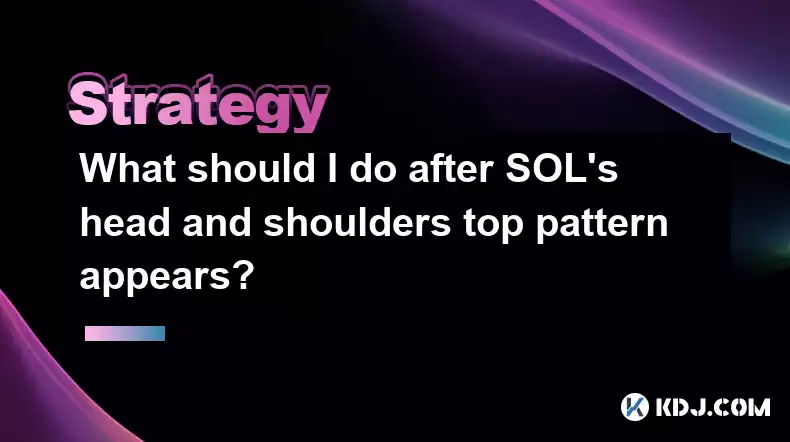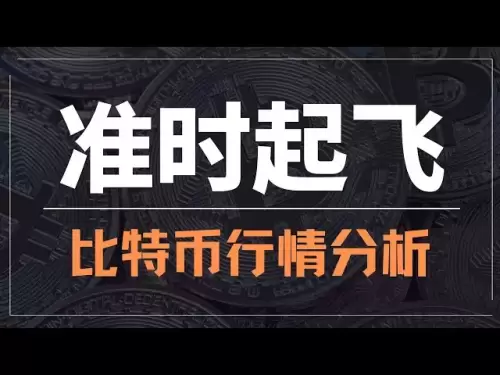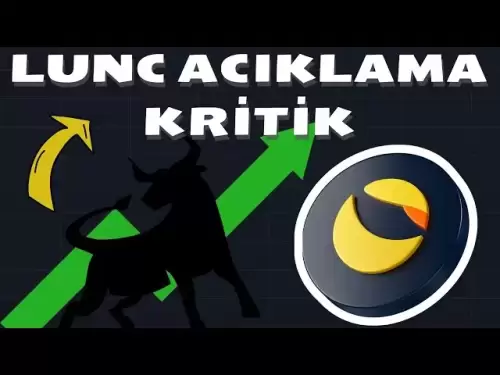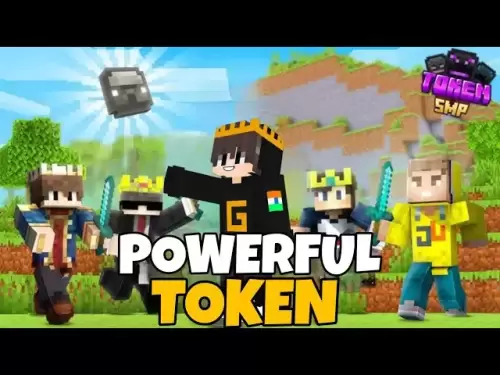-
 Bitcoin
Bitcoin $117300
1.93% -
 Ethereum
Ethereum $3866
5.21% -
 XRP
XRP $3.109
3.81% -
 Tether USDt
Tether USDt $1.000
0.01% -
 BNB
BNB $781.5
1.52% -
 Solana
Solana $173.0
2.95% -
 USDC
USDC $0.9998
0.00% -
 Dogecoin
Dogecoin $0.2181
6.31% -
 TRON
TRON $0.3403
0.93% -
 Cardano
Cardano $0.7683
3.91% -
 Hyperliquid
Hyperliquid $40.08
5.09% -
 Sui
Sui $3.742
7.38% -
 Stellar
Stellar $0.4152
4.69% -
 Chainlink
Chainlink $18.40
10.03% -
 Bitcoin Cash
Bitcoin Cash $580.6
2.21% -
 Hedera
Hedera $0.2543
4.25% -
 Ethena USDe
Ethena USDe $1.001
-0.01% -
 Avalanche
Avalanche $22.94
3.52% -
 Litecoin
Litecoin $121.8
2.24% -
 UNUS SED LEO
UNUS SED LEO $8.955
-0.41% -
 Toncoin
Toncoin $3.330
3.03% -
 Shiba Inu
Shiba Inu $0.00001270
2.97% -
 Uniswap
Uniswap $10.34
6.42% -
 Polkadot
Polkadot $3.805
3.86% -
 Dai
Dai $1.000
0.01% -
 Bitget Token
Bitget Token $4.429
1.80% -
 Cronos
Cronos $0.1495
4.65% -
 Monero
Monero $255.6
-9.08% -
 Pepe
Pepe $0.00001096
4.40% -
 Aave
Aave $282.9
7.85%
What should I do after SOL's head and shoulders top pattern appears?
After SOL's head and shoulders top pattern appears, consider selling, setting a stop-loss, or short selling based on your strategy and market context.
Apr 19, 2025 at 01:07 am

After SOL's head and shoulders top pattern appears, it is crucial to understand the implications of this technical formation and take appropriate actions based on your investment strategy. The head and shoulders pattern is a bearish reversal pattern, indicating that the price of SOL might decline after reaching a peak. Here's a comprehensive guide on what to do after this pattern appears.
Understanding the Head and Shoulders Pattern
The head and shoulders top pattern is characterized by three peaks, with the middle peak (the head) being the highest and the two outer peaks (the shoulders) being lower and roughly equal in height. The pattern is complete when the price breaks below the neckline, which is a support level drawn by connecting the lows of the two troughs between the peaks.
To confirm the pattern, watch for the following:
- Left Shoulder: A peak followed by a decline.
- Head: A higher peak followed by a decline.
- Right Shoulder: A peak that is lower than the head but roughly equal to the left shoulder, followed by a decline.
- Neckline: The line connecting the lows of the troughs between the peaks. A break below this line confirms the pattern.
Assessing the Market Context
Before making any decisions, it's important to assess the broader market context. Look at the following factors:
- Volume: A decrease in volume during the formation of the right shoulder compared to the left shoulder and head can confirm the bearish sentiment.
- Other Indicators: Use other technical indicators like the Relative Strength Index (RSI) or Moving Average Convergence Divergence (MACD) to confirm the bearish trend.
- Market Sentiment: Check news and social media to gauge the overall sentiment towards SOL and the broader cryptocurrency market.
Deciding Your Strategy
Based on the confirmation of the head and shoulders pattern and the market context, you can decide on one of the following strategies:
Selling Your SOL Holdings
If you believe the bearish trend will continue, you might consider selling your SOL holdings to avoid potential losses. Here's how to do it:
- Log into your cryptocurrency exchange account.
- Navigate to the trading section and select SOL.
- Choose the market or limit order type. A market order will sell your SOL at the current market price, while a limit order allows you to set a specific price.
- Enter the amount of SOL you want to sell.
- Review and confirm the order.
Setting a Stop-Loss Order
If you want to hold onto your SOL but protect against further downside, you can set a stop-loss order. This will automatically sell your SOL if the price drops to a certain level. Here's how to set it up:
- Log into your cryptocurrency exchange account.
- Navigate to the trading section and select SOL.
- Choose the stop-loss order type.
- Set the stop price at a level below the current market price but above the neckline of the head and shoulders pattern.
- Enter the amount of SOL you want to protect.
- Review and confirm the order.
Short Selling SOL
If you are confident in the bearish trend and want to profit from it, you can consider short selling SOL. This involves borrowing SOL and selling it at the current market price, with the intention of buying it back at a lower price to return to the lender. Here's how to do it:
- Log into your cryptocurrency exchange account.
- Navigate to the margin trading section and select SOL.
- Choose the short sell option.
- Enter the amount of SOL you want to short.
- Review and confirm the order.
- Monitor the market and buy back the SOL at a lower price to close the position.
Monitoring the Market
After taking action, it's essential to continue monitoring the market to adjust your strategy as needed. Keep an eye on the following:
- Price Movements: Watch for any significant price movements that might indicate a reversal or continuation of the trend.
- Volume: Monitor trading volume to confirm the strength of the trend.
- News and Events: Stay updated on any news or events that could impact SOL's price.
Adjusting Your Strategy
Based on your ongoing market analysis, you might need to adjust your strategy. Here are some possible adjustments:
- Adjusting Stop-Loss Levels: If the price continues to decline, you might want to lower your stop-loss level to protect against further losses.
- Closing Short Positions: If the price starts to recover, you might want to close your short position to lock in profits.
- Re-entering the Market: If the bearish trend reverses, you might consider re-entering the market by buying SOL at a lower price.
Frequently Asked Questions
Q: Can the head and shoulders pattern be a false signal?
A: Yes, the head and shoulders pattern can sometimes be a false signal. It's important to confirm the pattern with other technical indicators and market context before making any decisions.
Q: How long does it typically take for the head and shoulders pattern to play out?
A: The duration of the head and shoulders pattern can vary widely, from a few weeks to several months. It depends on the timeframe of the chart you are analyzing.
Q: Is it possible for the price to recover after breaking the neckline?
A: Yes, it is possible for the price to recover after breaking the neckline, but this is less common. If the price does recover, it might form a double bottom or another bullish pattern.
Q: Should I always sell my holdings when a head and shoulders pattern appears?
A: Not necessarily. Your decision should be based on your overall investment strategy, risk tolerance, and the confirmation of the pattern with other indicators. Sometimes, holding with a stop-loss order might be a better strategy.
Disclaimer:info@kdj.com
The information provided is not trading advice. kdj.com does not assume any responsibility for any investments made based on the information provided in this article. Cryptocurrencies are highly volatile and it is highly recommended that you invest with caution after thorough research!
If you believe that the content used on this website infringes your copyright, please contact us immediately (info@kdj.com) and we will delete it promptly.
- Bitcoin Reserve, Gold Revaluation, Congress Considers: A New Era for US Financial Strategy?
- 2025-08-08 04:30:12
- KAITO's Momentum: Can It Reclaim Support Amidst Social Media Scrutiny?
- 2025-08-08 04:30:12
- Pi Coin's dApp and AI Potential: Building a Decentralized Future
- 2025-08-08 02:30:12
- Ruvi AI Takes the Lead: Outshining Dogecoin on CoinMarketCap
- 2025-08-08 02:50:12
- Cryptos Under $1: Is Ripple Still the King?
- 2025-08-08 03:50:12
- Cold Wallet, Bonk Price, ICP Price: Navigating the Crypto Landscape in 2025
- 2025-08-08 03:56:12
Related knowledge

How to avoid common crypto investment mistakes?
Jul 13,2025 at 01:35am
Understanding the Risks of Crypto InvestmentInvesting in cryptocurrency can be highly rewarding, but it also comes with significant risks. One of the ...

What is a long-short crypto strategy?
Jul 15,2025 at 10:56am
Understanding the Basics of a Long-Short Crypto StrategyA long-short crypto strategy is an investment approach where traders simultaneously take long ...

What is a long-short crypto strategy?
Jul 11,2025 at 01:28pm
Understanding the Basics of Long-Short Crypto StrategyA long-short crypto strategy is an investment approach where traders take both long and short po...

How to use the RSI indicator for crypto?
Jul 12,2025 at 03:56pm
Understanding the RSI Indicator in Cryptocurrency TradingThe Relative Strength Index (RSI) is a momentum oscillator used to measure the speed and chan...

Is copy trading a good strategy for crypto beginners?
Jul 12,2025 at 08:28am
Understanding Copy Trading in the Cryptocurrency MarketCopy trading is a strategy where novice traders replicate the trades of experienced investors a...

How to build a crypto portfolio with $1000?
Jul 13,2025 at 08:14pm
Understanding the Basics of Cryptocurrency InvestmentBuilding a crypto portfolio with $1000 starts with understanding the fundamentals of cryptocurren...

How to avoid common crypto investment mistakes?
Jul 13,2025 at 01:35am
Understanding the Risks of Crypto InvestmentInvesting in cryptocurrency can be highly rewarding, but it also comes with significant risks. One of the ...

What is a long-short crypto strategy?
Jul 15,2025 at 10:56am
Understanding the Basics of a Long-Short Crypto StrategyA long-short crypto strategy is an investment approach where traders simultaneously take long ...

What is a long-short crypto strategy?
Jul 11,2025 at 01:28pm
Understanding the Basics of Long-Short Crypto StrategyA long-short crypto strategy is an investment approach where traders take both long and short po...

How to use the RSI indicator for crypto?
Jul 12,2025 at 03:56pm
Understanding the RSI Indicator in Cryptocurrency TradingThe Relative Strength Index (RSI) is a momentum oscillator used to measure the speed and chan...

Is copy trading a good strategy for crypto beginners?
Jul 12,2025 at 08:28am
Understanding Copy Trading in the Cryptocurrency MarketCopy trading is a strategy where novice traders replicate the trades of experienced investors a...

How to build a crypto portfolio with $1000?
Jul 13,2025 at 08:14pm
Understanding the Basics of Cryptocurrency InvestmentBuilding a crypto portfolio with $1000 starts with understanding the fundamentals of cryptocurren...
See all articles

























































































